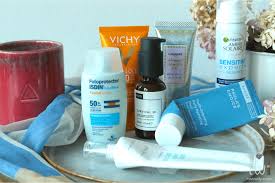
Sunscreen Scandals: What You’re Not Being Told
We’re told sunscreen is essential for preventing skin cancer and premature aging—but what if the very products we’re using to protect ourselves are part of the problem?
Over the past few years, headlines have revealed unsettling truths about some sunscreen brands: toxic ingredients, product recalls, and even cancer-causing contaminants. If you think all sunscreens are safe just because they’re on store shelves, you might want to read on.
Also check for : the-right-way-to-shower-for-skin-and-immunity
Here’s what you’re not being told—and what you need to know to protect your skin and your health.
🧪 The Hidden Chemicals in Your Sunscreen
Many commercial sunscreens contain chemical UV filters like:
-
Oxybenzone
-
Octinoxate
-
Homosalate
-
Octocrylene
These ingredients are approved in many countries—but studies have raised concerns about their potential effects:
-
Hormone disruption (linked to infertility and thyroid problems)
-
Allergic skin reactions
-
Environmental harm, especially to coral reefs
In fact, places like Hawaii and parts of Europe have banned sunscreens containing oxybenzone and octinoxate due to ecological risks.
🧬 Absorbed Into Your Bloodstream?
A 2020 FDA study found that several sunscreen ingredients can be absorbed into the bloodstream within hours of application—even after a single use. The study didn’t conclude that these chemicals are unsafe, but it did raise red flags, calling for more long-term safety research.
This leaves consumers in a gray zone: widely used ingredients with incomplete safety data.
🚨 Benzene Contamination Scandals
In 2021, an independent lab detected benzene—a known carcinogen—in dozens of sunscreen products, including sprays and lotions from big-name brands like Neutrogena, Aveeno, and Banana Boat.
This wasn’t an ingredient on the label—it was contamination during manufacturing, and it triggered nationwide recalls.
Some affected products remained on shelves for weeks before action was taken. The fact that such a dangerous chemical could slip through quality control left many asking: Can we really trust these products?
😬 Spray Sunscreens: Convenient But Risky?
Spray sunscreens may seem handy, especially for kids, but they come with risks:
-
Inhalation hazard (especially in children and pets)
-
Less reliable coverage (easy to miss spots)
-
More likely to contain volatile solvents or propellants, which can react with heat
The FDA advises caution with sprays—especially around the face—and recommends rubbing them in for proper coverage.
🌞 The Natural vs. Chemical Debate
Sunscreens fall into two main categories:
1. Chemical Sunscreens
Use synthetic compounds (like oxybenzone) to absorb UV rays.
Pros:
-
Lightweight, invisible on skin
-
Often water-resistant
Cons:
-
Potential hormone disruptors
-
Skin sensitivities
-
Environmental impact
2. Mineral (Physical) Sunscreens
Use natural ingredients like zinc oxide and titanium dioxide to reflect UV rays.
Pros:
-
Reef-safe and skin-friendly
-
Begin working immediately after application
-
Less likely to cause irritation
Cons:
-
Can leave a white cast (though modern formulations are improving)
-
May be thicker or less sweat-resistant
🧴 What to Look for Instead
If you want to play it safe, dermatologists and environmental experts suggest:
-
Choosing mineral-based sunscreens with non-nano zinc oxide or titanium dioxide
-
Avoiding products with oxybenzone, octinoxate, and fragrance
-
Looking for “reef-safe” and EWG-verified options
-
Buying from brands that disclose third-party testing
And always check for recent recall lists before you stock up.
✅ Quick Tips for Safer Sun Protection
-
Apply 15–30 minutes before sun exposure
-
Reapply every 2 hours (more if swimming or sweating)
-
Don’t rely on sunscreen alone—seek shade, wear hats and UV-protective clothing
-
Don’t use expired sunscreen
-
Patch test new products, especially on sensitive skin
🩺 So, Should You Stop Using Sunscreen?
No. The risks of unprotected sun exposure—sunburn, DNA damage, and skin cancer—far outweigh the potential issues with sunscreen when used wisely. The goal isn’t to scare you away from protection, but to choose smarter, safer products and stay informed.
🔍 Final Thoughts
Sunscreen is a modern necessity—but not all sunscreens are created equal. From toxic contaminants to hormone-disrupting ingredients, it’s clear that transparency in the sunscreen industry is overdue.
As a consumer, your best defense is knowledge. Read labels. Stay updated. Choose brands that prioritize health and safety.
Because your skin deserves better than secrets.

1 thought on “Sunscreen Scandals: What You’re Not Being Told”